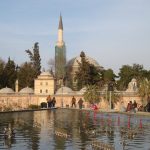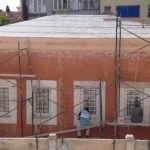Historic carpet-making centre Population: 2,900
Once the production centre for some of Turkey’s finest silk carpets, Hereke is now something of a backwater, sidelined by a motorway that whisks cars straight past it on their way to İzmit/Kocaeli. But in 1843 the Hereke Imperial Factory was founded here on the initiative of Sultan Abdülmecid I to produce all the fabrics required by the royal palaces, in particular for the Dolmabahçe. In 1920 it was converted into a carpet-making school. Some work continued on the site through until the 1990s.
Today a small museum (closed Saturdays and Sundays) shows off some of the textiles (although not the carpets) once made on the site.
Nearby is the Kaiser Wilhelm II Pavilion, also known as the Çivisiz Köşkü (Pavilion Without Nails, a lovely wooden yalı (waterside mansion), rather like the one in nearby Eskihisar where the Ottoman artist Osman Hamdi Bey passed his summers. It was built for the visit of Kaiser Wilhelm II (the man who paid for the fountain in İstanbul’s Hippodrome) in 1884 and comes with a set of guest rooms even closer to the water. It is possible though by no means certain that Raimondo d’Aronco played some part in its design.
Even more surprising is the pretty little harbour ringed with boats that turns its back firmly on the road to offer the patrons of its small fish restaurants a glorious view out over the Sea of Marmara. The finest is the Halit.
Hereke carpets These fine silk carpets were woven using the Turkish double knot and can have more than a million knots per square metre. Many of the designs reflected the influence of Persia in particular. They were often given as gifts to visiting dignitaries.
Transport info
To get to Hereke from the centre of İstanbul without a car take a bus from Harem otogar to İzmit, then another to Körfez and then a third that backtracks to Hereke.
Some high-speed trains (YHT) from İstanbul also stop at Hereke.

